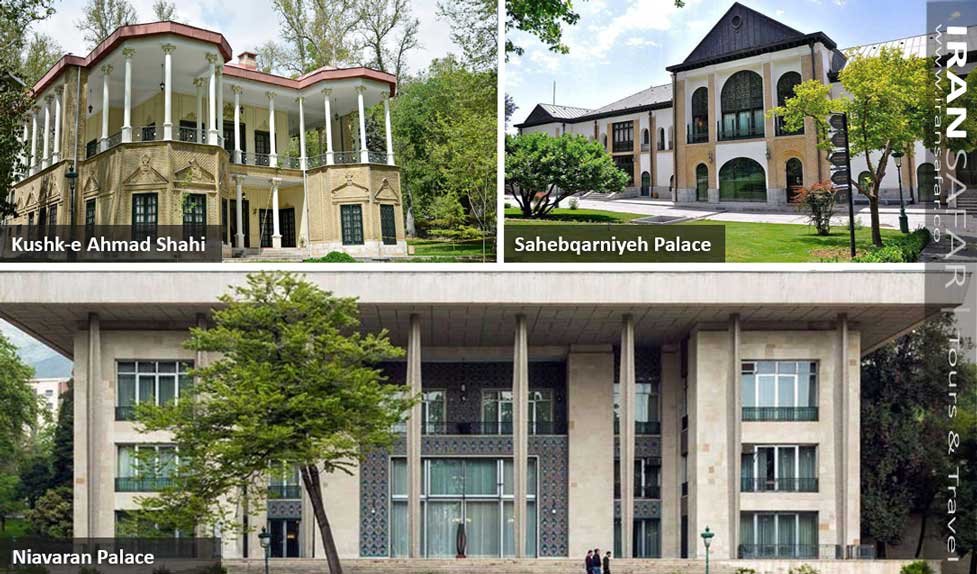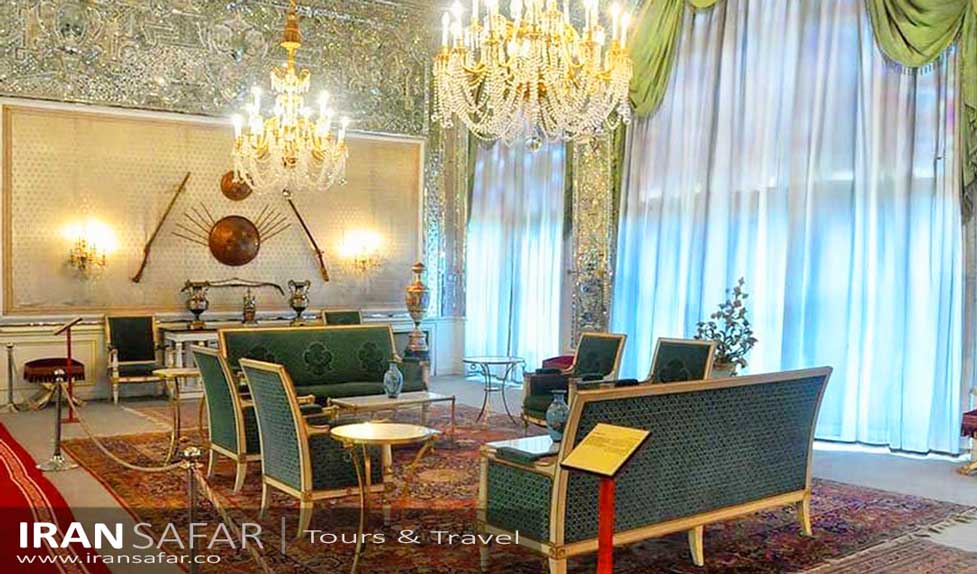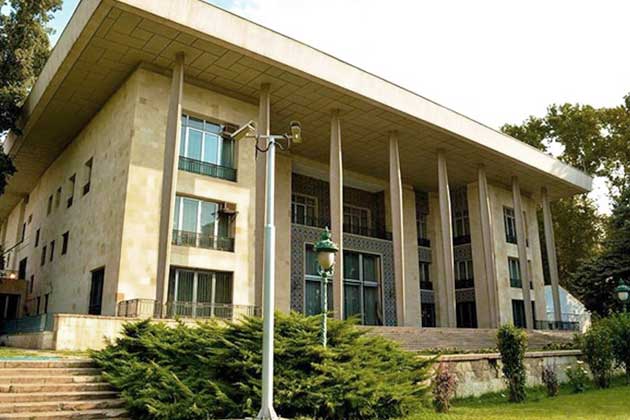located in north Tehran, Niavaran Palace was originally built during the Qajar Era in mid-19th century and served also as the residence of the last king of Iran, Mohammad Reza Pahlavi. After the Islamic revolution in 1979, this complex turned into a museum and was opened to people.
In this article, we are going to introduce this spectacular complex to you.
History of Naiavaran Palace
Niavaran region is located in north Tehran, near the Alborz mountain range. It was chosen as a summer residence of Iranian kings for the first time during the Qajar era. In the past, the Niavaran complex in Tehran was much smaller than today and was located outside the city of Tehran. Due to the proximity to the mountains and the excellent climate in this area, Fath Ali Shah the second king of Qajar ordered to build a garden and a mansion as his summer residence in this area.
Years later, during the Pahlavi era -the last royal dynasty of Iran- Niavaran Palace was first chosen as a place to receive foreign guests, and then it became the residence of the king and his wife, Farah Diba, and their children.

Niavaran Palace
The architecture of the Niavaran complex is primarily a fusion of Iranian and European architectural styles. The design of the Niavaran Palace building was done by Mohsen Foroughi. He was a professor of Iranian architecture and the head of Tehran University of Fine Arts. He was also one of the founders of Tehran University’s Faculty of Architecture. Farah Diba, who studied architecture in France, was herself responsible for interior design of this palace too.
The retractable roof of the palace is considered one of the most important innovations of its time. In the construction of this roof, use of aluminum has made it light enough for mobility.
The ground floor of the palace consists of a reception hall, a waiting room, a dining room, the blue hall and a 400-meter cinema hall,
There are priceless decorative objects in this floor, such as paintings by great artists of the world and very beautiful and valuable furniture. Some off the objects that catch the eyes of each visitor are surely the carpets. Most famous Iranian carpets are spread in this palace and each one has a unique design. The most famous one called Salatin represents portraits of Iranian kings throughout history of Iran, from the Achaemenid period to the Qajar era.
> 360 virtual visit of Niavaran palace ground floor
The decorative dishes that you can see in this floor are all historical and valuable works; Among them, we can mention Marlik archaeological pottery. Of course, it should be mentioned that most of these valuable dishes were gifts from foreign officials to the Iranian royal family. Another one of the most valuable objects inside this hall is a beautiful piano that the German government gave to the Shah as a gift.
The upper floor of the Niavaran Palace was the residence of the royal family and the bedrooms are located here. Mohammad Reza Pahlavi’s private room and the afternoon resting room are also located on this floor. It is interesting to know that all the furniture on this floor is as it originally was. You can even see Farah Diba’s personal clothes among which the tribal dresses and needlework of Baluchistan are remarkable.
The last floor contains the bedroom of Leila, the youngest daughter of the Shah, the conference room, and the office of Farah’s secretary.
The living room of the third floor is also remarkable in a historical point of view. It is said that the last moments of Mohammad Reza Pahlavi’s presence in Iran and Niavaran Palace were in this room and then he moved to the airport with his wife and left Iran forever.
Kushk-e Ahmad Shahi
Kushk means a small palace or a pavilion in the middle of a Persian Garden. This building is a two-story mansion that originally belonged to Ahmed Shah – the last Qajar king.
The function of this relatively small mansion is unknown but it is said that Ahmad Shah Qajar lived here during his childhood when he was crown prince. Or, according to some other documents, he used this mansion as a secret pleasure spot.
Decades later, in the last years of Pahlavi rule, this pavilion became the residence of the Shah’s eldest son – crown prince Reza II.
His personal belongings and valuable collections are currently on display in this mansion.
Among the most important objects displayed in this section is a stone piece of the moon, which was gifted to Reza Pahlavi by the US president Richard Nixon.
Royal Library
The building of this library is built on two floors and has been used as Farah’s library. In this library, about 23,000 volumes of valuable books are kept, some of which were given to Farah as gifts by famous figures such as John F Kennedy and Walt Disney.
Sahebqaraniyeh Palace
Built in 1850 by the order of Naser al-din Shah Qajar, Sahebqaraniyeh Palace was the largest Qajar structure in the Niavaran garden.It served as the most important summer palace of Qajar kings in 19th century.
During the Pahlavi rule, this old palace was restored and Shah used it as his office, a gathering place and also to meet important guests.
By making changes, the first floor was renovated for reception of guests and the second floor was restructured as the office of Mohammad Reza Pahlavi. The Mirror Hall is one of the most beautiful parts of this palace.
 Sahebqaraniyeh Palace
Sahebqaraniyeh Palace
Inscriptions Museum Garden
Niavaran Inscriptions Garden is a permanent exhibition of ancient Iranian stone inscriptions in Niavaran Garden. In this exhibition, there are 43 inscriptions from different historical periods from the time of Medes, Assyrians, Sumerians, Elamites, and Sasanians. The most famous of these inscriptions are the inscriptions of Shapur and Ardeshir in Naqsh-e Rostam, the inscription of Shapur I in the Naqsh-e Rajab, and the inscription of Kartir.
Jahan-Nama Museum
Jahan-Nama Museum contains objects that were gifted to Farah Diba or she bought them. Jahan-Nama Museum has sections of prehistoric objects and works of contemporary arts from Iran and other countries. In the prehistoric section of this museum, we can see artifacts and objects from ancient civilizations in different parts of Iran, such as Lorestan and Amlesh, Gilan, and ancient objects from North America. In another part, there are works by Pablo Picasso, Salvador Dali, Paul Gauguin, and other great European and American artists. Another part of this collection contains the works of top Iranian artists such as Parviz Tanavoli, Bahman Mohassas, Faramarz Pilaram, and Jafar Roohbakhsh.
Royal Cars Museum
One of the interesting parts of Niavaran Palace is the Royal Cars Museum. In this section, historical, valuable and exquisite cars are kept. These cars were mostly given to the Iranian court by heads of states or by the manufacturers. Motorbikes and automobiles belonging to the Shah and his family are displayed in the museum.
On your trip to Iran, and while in Tehran, try to plan you a visit to the Niavaran palace complex, which is one of the three important royal palaces in Tehran.



Dear iransafar
Thanks for providing such detailed information and useful articles🌺